🇮🇳 India in 2024
Apr 2, 2024 · 21 min read · 18,106 views
In February I made my first business trip to India. For three weeks I traveled to Mumbai, Ahmedabad, Delhi, and Bengaluru. My goal was to visit friends, portfolio companies, co-investors, and ex-coworkers, but the outcome was that I am now more bullish on India than ever before.
Let me explain why… Who knows maybe I can convince you too to update your image of India in 2024.

(Top to bottom: Delhi, Ahmedabad, Mumbai, Bengaluru)
I have been hiring in India since my early Product Hunt days, my teams at AngelList, CoinList, and On Deck had multiple Indian (born or first-generation) team members, several of my last bosses where Indian, and I have invested in over 18 teams with Indian founders. But still after all of this, this was my very first trip to India itself.
And so the goal of my first visit was simple: Understand India… not completely, but at least a bit better. Get context, see the nuances, and understand the people and their culture.
I booked a round-trip ticket and a hotel room for the first few nights. Beyond that, I had no plan.
I knew my first stop would be Mumbai, as I gave a talk at the IIT Bombay. And I wanted to have Bengaluru as an exit airport due to better flights. The rest of the plan for the three-week trip was meant to be purely spontaneous.
This article is a summary of impressions and thoughts. All of this is heavily biased, non-complete, subjective, and written by someone who has only visited once and mostly with an elite group of founders, investors, and students. I don’t claim my POV to be holistic nor sophisticated, but I hope to Indians it's interesting to see an outside-in perspective. And for internationals, it could be encouraging to visit India by themselves, or at least change their image of it a bit.
Impressions
India will be one of the global superpowers in the next 10 years and the current generation knows it
This feeling is hard to explain but everyone I met knew that India now has breakout velocity.
“It took India 60 years since Independence to become one trillion-dollar economy, but the next trillion dollars was added only in 7 years. The 3rd trillion was added in just 5 years in 2019. The growing momentum could see India add on average 1 trillion dollar to its economy every two years for the next 14-15 years.” (source)
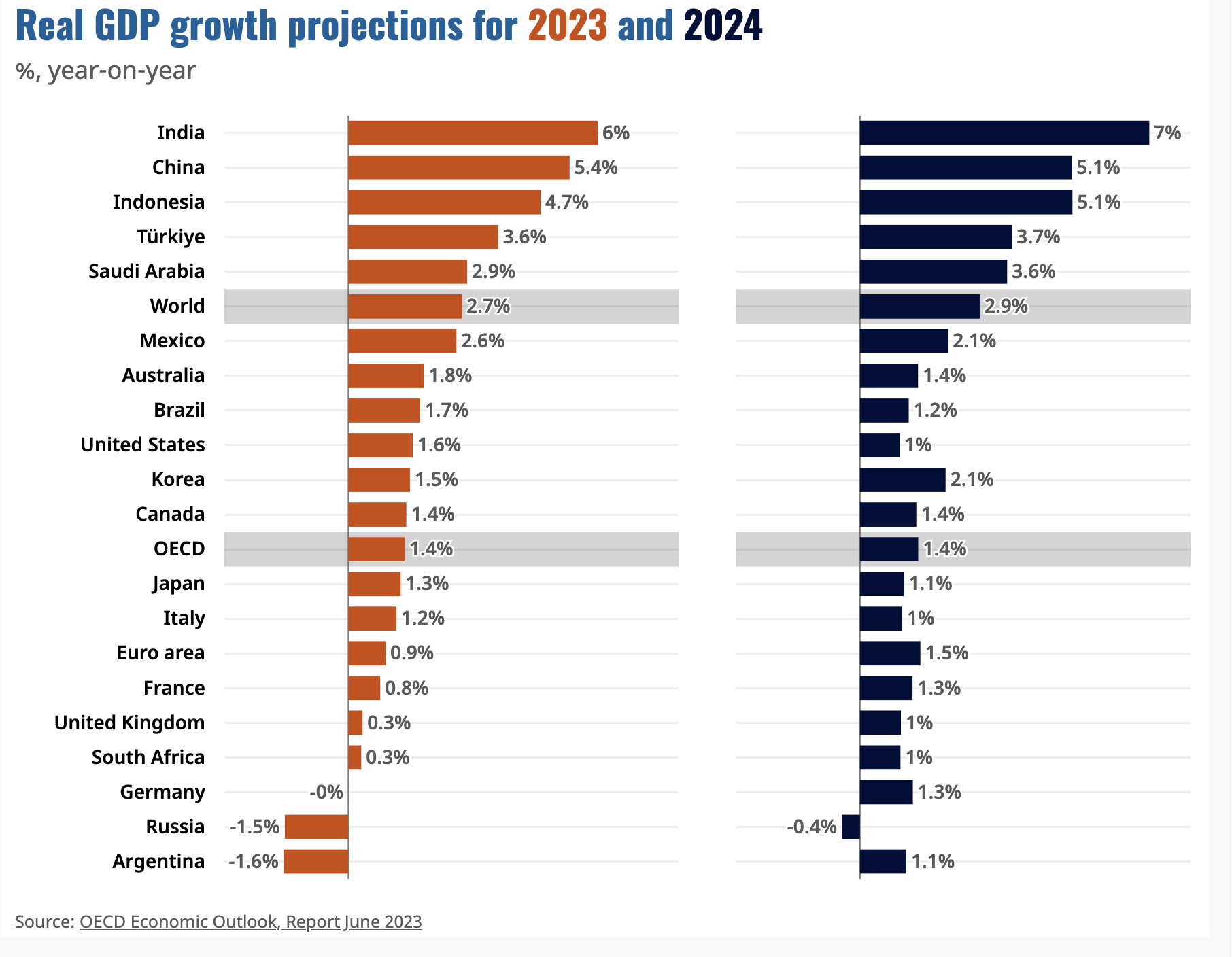
India is in an excellent position to leverage the tensions between China & US and Russia & Europe. India is becoming a manufacturing powerhouse, its universities are doing breakout research, the population is vast, the middle class is growing fast, and the current generation is hungry.
As an outsider, it feels like everyone wants their part in this "becoming a global superpower” moment. Be part of the winning underdog story. They want to create something big, and more importantly, they believe it is possible.
A common discussion I had was: "My older brothers moved to the US (or the UK), but I decided to stay because I thought [THEIR PROJECT] has a bigger potential in India." - I also met several people who moved internationally and then back home for their newest project.
India can build for the world
One thing that got me was a little plaque in the cars of Mahindra & Mahindra. It says not just "Made in India" but "Made in India. With Pride."
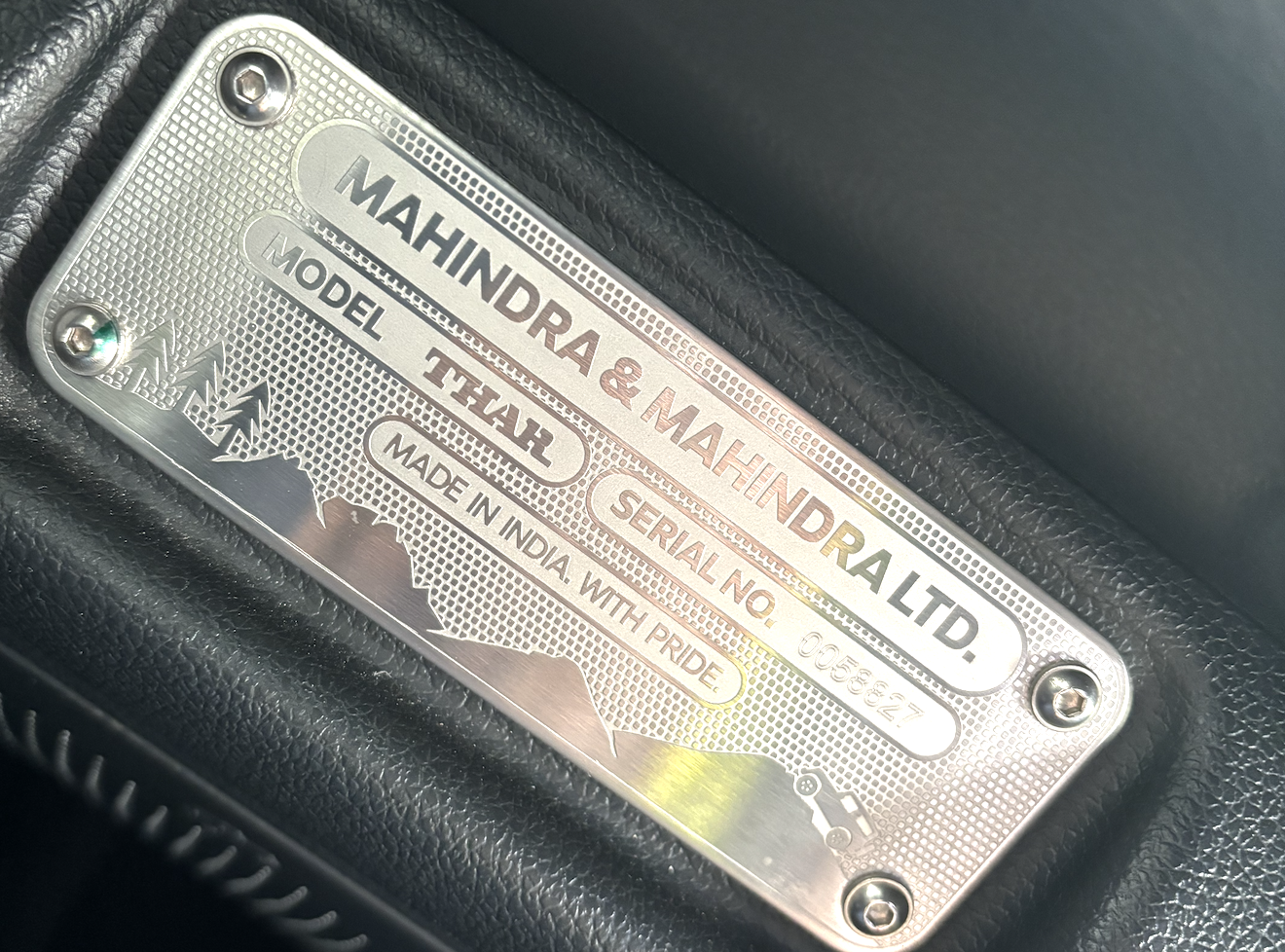
And this was something I felt along multiple parts of my trip.
“Made in India” used to be a compromise. The meme was that they produce for the world but at low quality, but this is changing.
I strongly believe that India is in a powerful position to build for the world, that rivals China
- Many speak natively English
- Keep in mind that Hindi is just one of their languages and many locally don't speak it (depending on region)
- Meetups are done in English not for foreigners but for locals
- Indians will become the largest english speaking group globally
- Keep in mind that Hindi is just one of their languages and many locally don't speak it (depending on region)
- They understand Western culture well
- The USA had a strong footprint culturally and people move back and forth internationally
- Their diaspora is massive
- You might have noticed this - it feels like every CEO of a successful SF-tech company right now is Indian
- And if not their CFO most likely is
- And that diaspora is very actively trying to keep a cultural connection back home, or even return
- According to Shiva of 1947 Rise 40%+ of Indian unicorns include founders who returned
- You might have noticed this - it feels like every CEO of a successful SF-tech company right now is Indian
- They have the skills
- Indians can program
- The image of cheap outsourcing is simply outdated
- And the current generation isn’t just looking at software but also deep-tech and research-heavy projects
Their deep-tech research is top notch
A lot of people still think of India as cheap outsourcing hub. "Build an enterprise app by throwing hundreds of people against it".
Imho: The current alpha in VC is in Indian Deeptech.
I went to multiple universities - eg IIT Bombay (Indian Institute of Technology), IIM Ahmedabad (Indian Institute of Management), and the IISc Bangalore (Indian Institute of Science).
The research is competitive. You will meet people working on spacetech, semiconductors, bio, pharma, energy, batteries, hyperloops, AI, etc. And the ambition can easily rival with international projects. For example, I met founders working on projects to become landlords in space. And I will leave this statement here without any further explanation.
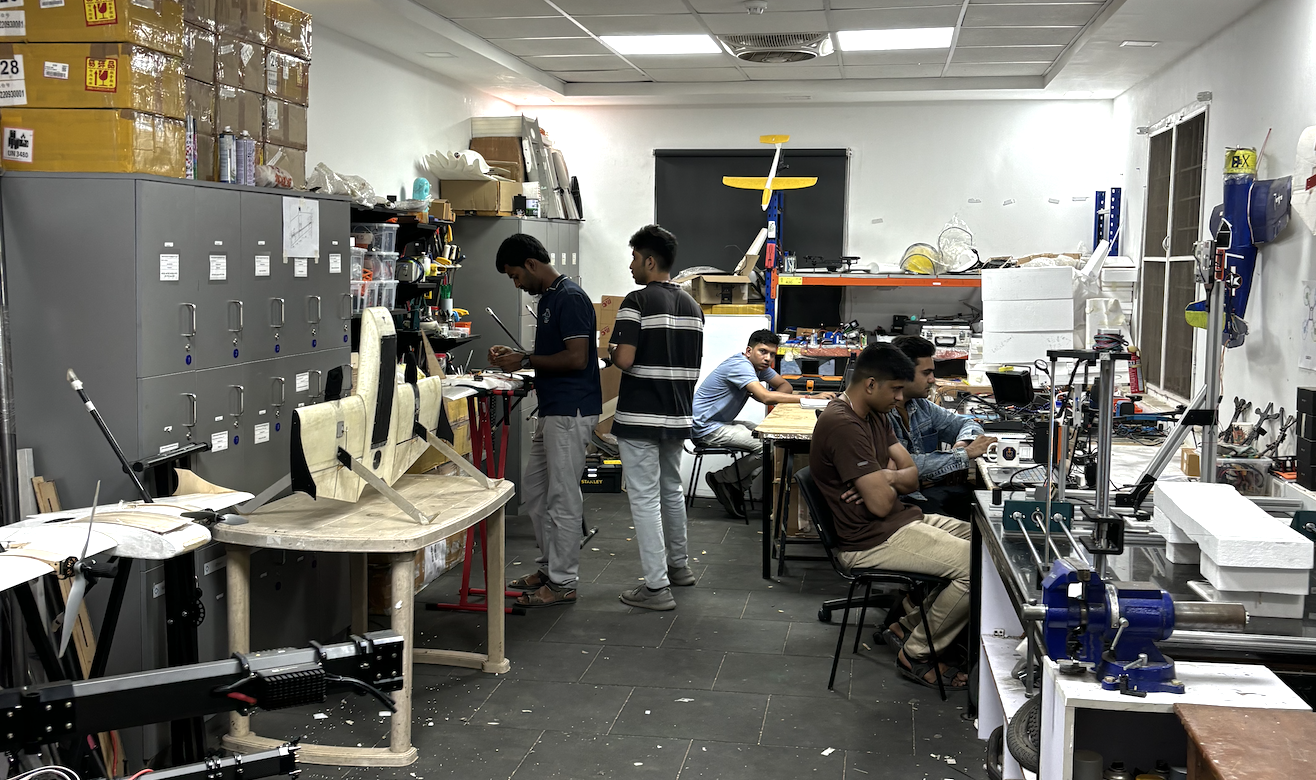
Students at IISc working on vision-based (gps-denied) autonomously navigating drones for defense tech in the late evening. They recognized me walking by and asked if they can demo their tech spontenously.
Furthermore, the funding infrastructure has matured over the last ten years. Almost every large fund has a local dependence (even if renamed) and especially the pre-seed deep-tech funds felt extremely qualified to me.
They have mature institutions to hire experienced talent from (eg ISRO – India’s NASA) and the government is encouraging the local market to become customers of the technology. Plus, if 1.4B people isn’t enough, they are in a strong position to build for the global south.
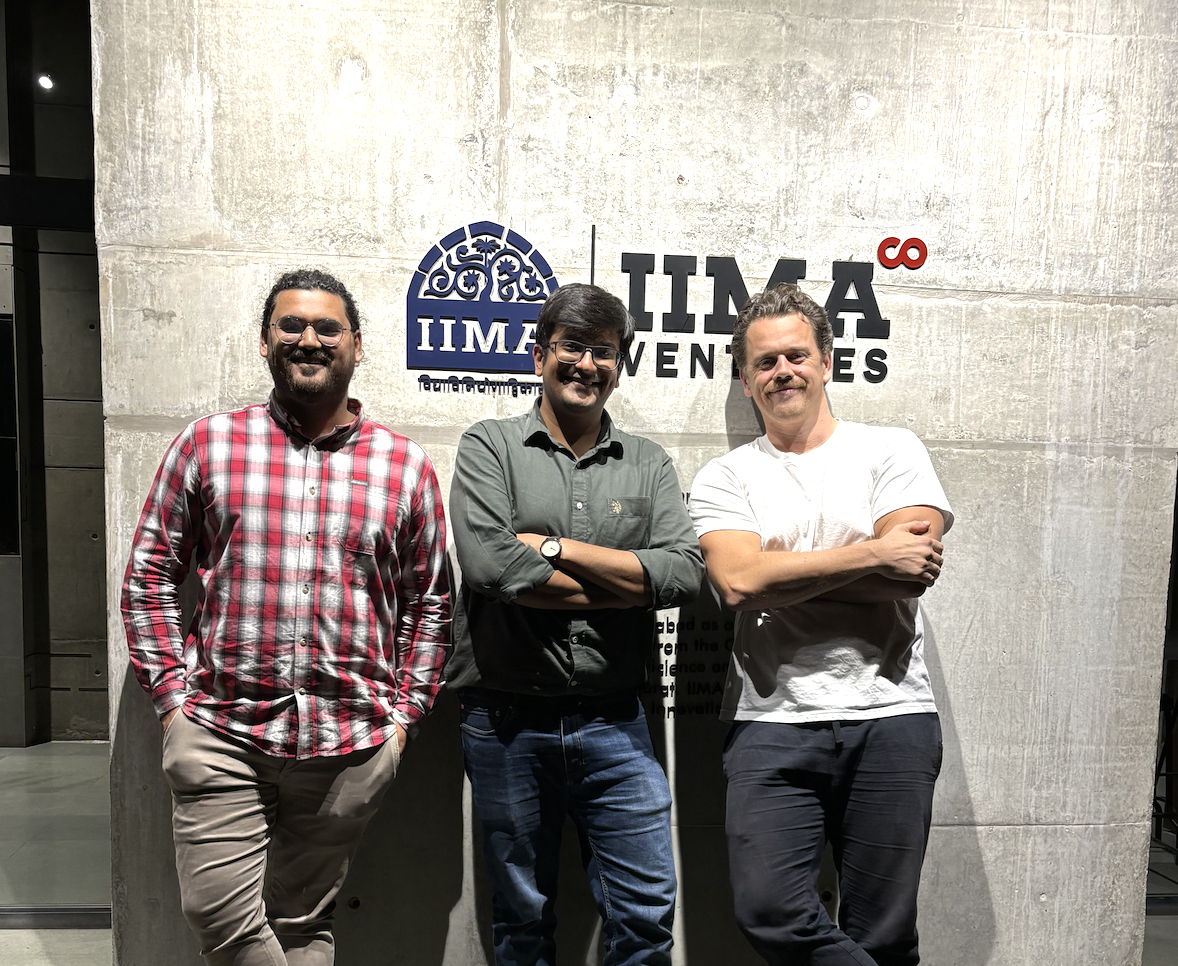
Hanging out with the founders of one of my best investments – Piersight late at night at their office in IIM Ahmedabad (next to the ISRO office).
Interested? Here is a great article by Ahammad who goes more into details.
The Indian entrepreneurs I met are hungry
This one is a bit harder to explain but there is a certain level of hunger among founders that you just notice all the time.
Friends organized meetups for me, 100+ people came, in multiple cities. Why? I am not that famous. Simple, because they hustle for every opportunity they get.
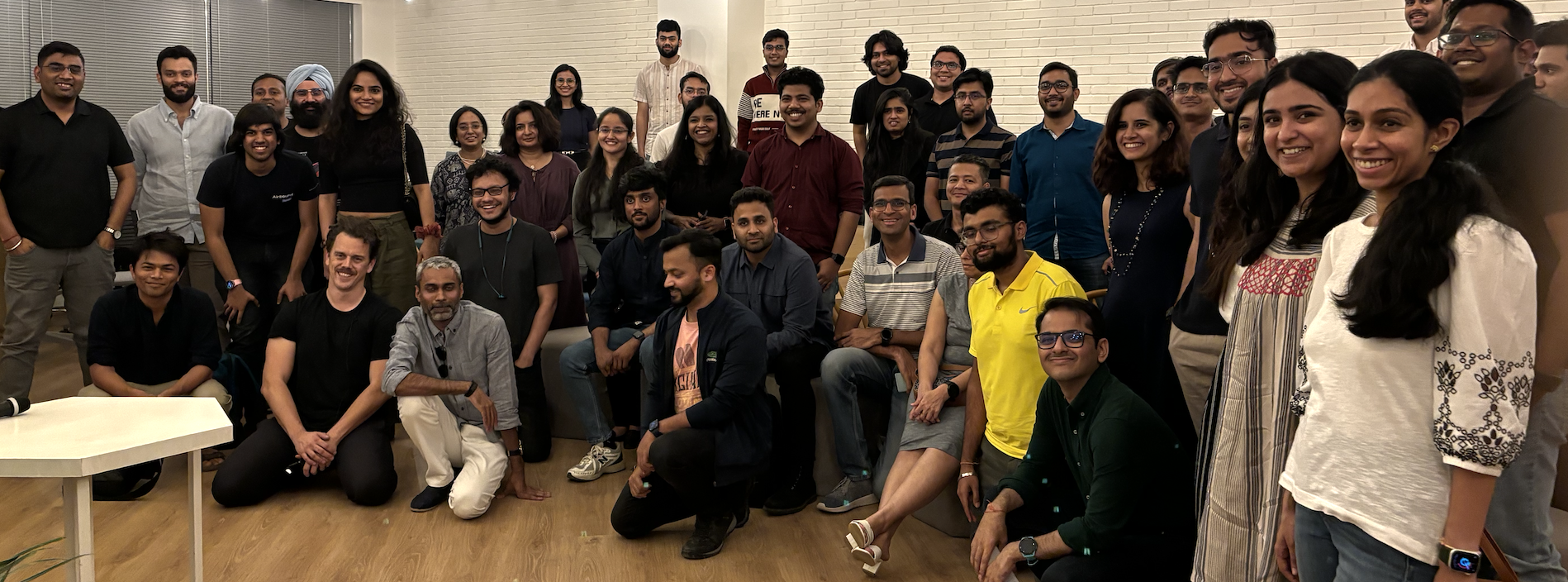
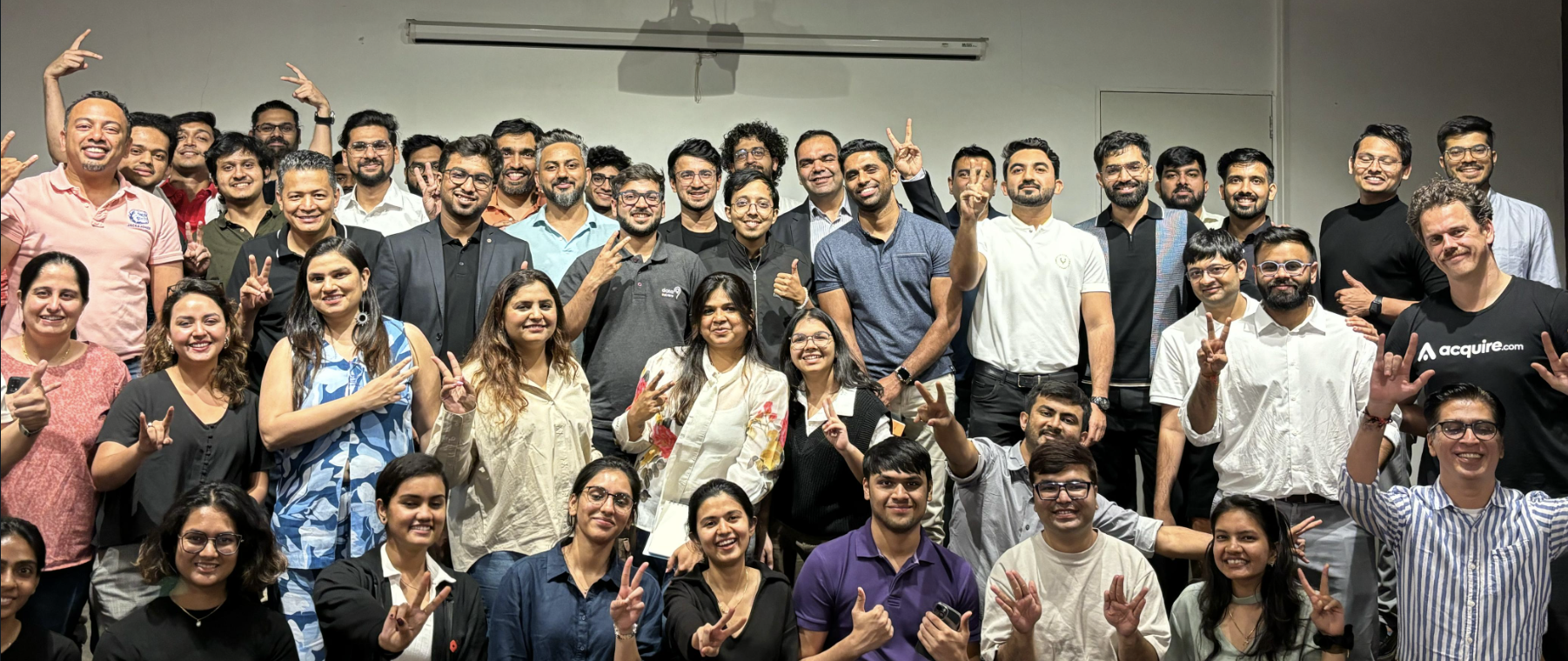
(Sidenote: Shoutout to Hemant, Vatsil, Utsav, and many more)
I had founders I met on short notice at 1 am. Let me repeat that… 1 am. And that wasn’t an exception. If I suggest 1 am meetings in Berlin I’d risk an HR violation.
These are little things but they shaped my impression.
As a tangent, because you might have experienced this too: If you zoom with Indian founders or engineers they don't even expect you to know what time it is in India, they just jump on a call even if it’s 2am or 3am for them.
Sidenote: Use this app if you work a lot internationally to avoid this situation ;)
I met multiple founders hustling that hard, who already worked for years on concepts that would get them Twitter famous with a tenth of the effort if they were US-based and added e/acc to their Twitter handle.
I know this sounds all very anecdotal and you meet hungry founders globally. But it felt like the norm on my trip.
To support this with a few numbers: India moved from a few hundred registered startups in 2014 to more than 100 thousand in 2024. And this doesn’t seem to be slowing down.
“Startup Founder” is now a hot keyword on Indian matchmaking sites and their version of Shark Tank is even popular with Indian parents everywhere. Indian readers: Will “being a founder” be the new mandatory medical degree? Will aunty be disappointed if you don’t raise from Sequoia?
My overall impression: The baseline expectation is high, and people hustle to get there.
The filters are insane
Which gets me to my next point. The filters are insane. The Indian Institutes of Technology (IITs) and Management (IIMs) are regarded almost as lottery tickets to a better standard of living because of their quality, exclusivity, and prestige.
For example: IIT acceptance rates are between 0.2-2.5%, to compare this Havard has 5% and MIT has 7%. And they have multiple IITs, and please realize that's not the only good schools there.

Indian parents are recommended to co-apply for US schools as “backup”. I knew for years to look for IIT in my hiring or investing. But back then I didn’t realize how hard JEE (their standardized assessment test for universities) was and what amount of pressure is put on students until I saw newspapers celebrating local students who scored well.
And that’s not where the filters stop. IISc (an institute with post-doc focus) expects you to come from a top university before you can even start there. The same is true for employers. I have portfolio founders who are ex-ISRO (the indian NASA) and explained to me the process to get into ISRO, how high their university scores were, and many people their assessment center screened out.
And those crazy people dropped out to start a startup. 🤯
My whole career was framed around giving "global opportunities to global talent". ProductHunt (eyeballs), AngelList (money + jobs), OnDeck (network), RFC (first-check investment).
But I never really emotionally registered what an international playing field can mean to people who are used to fighting to stand out. IDK how to put this in words but it gave me a lot of motivation to continue that path.
The International community is sleeping on India’s Digital Public Infrastructure
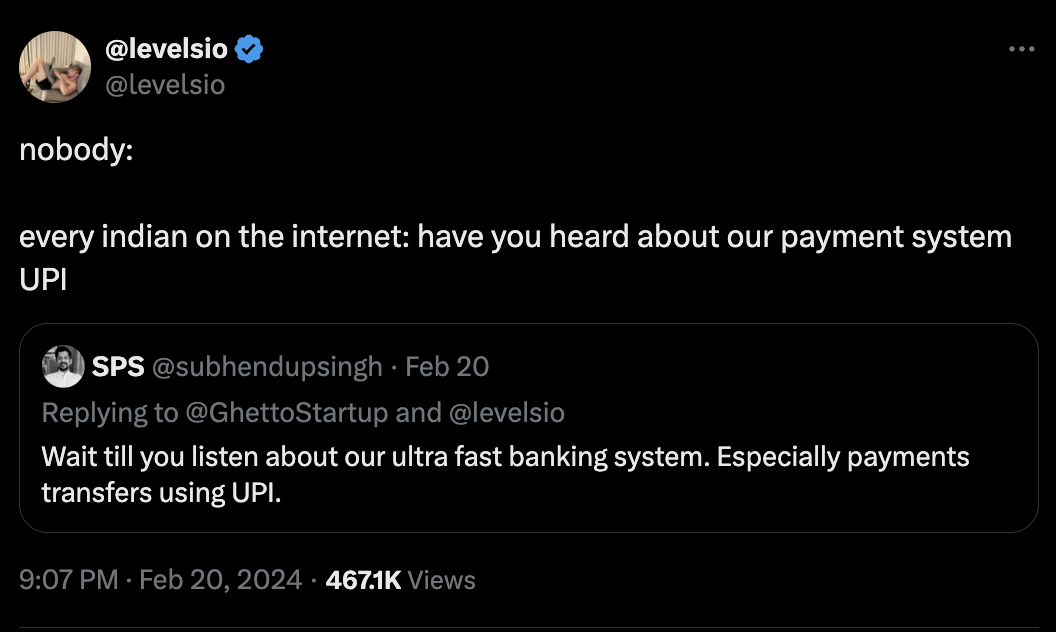
My friend Pieter is on the money here: But it's not just Indians – I now too tell everyone about UPI & co. Let’s see if I can UPI-pill you too.
Many here will know that Indians pay by using QR codes + their phone - without any meaningful fees to the parties. It's called UPI (Unified Payment Infrastructure). Similar to services available in other Asian countries.
It’s so commonly used that even some beggars have QR codes. And it’s still growing like crazy.
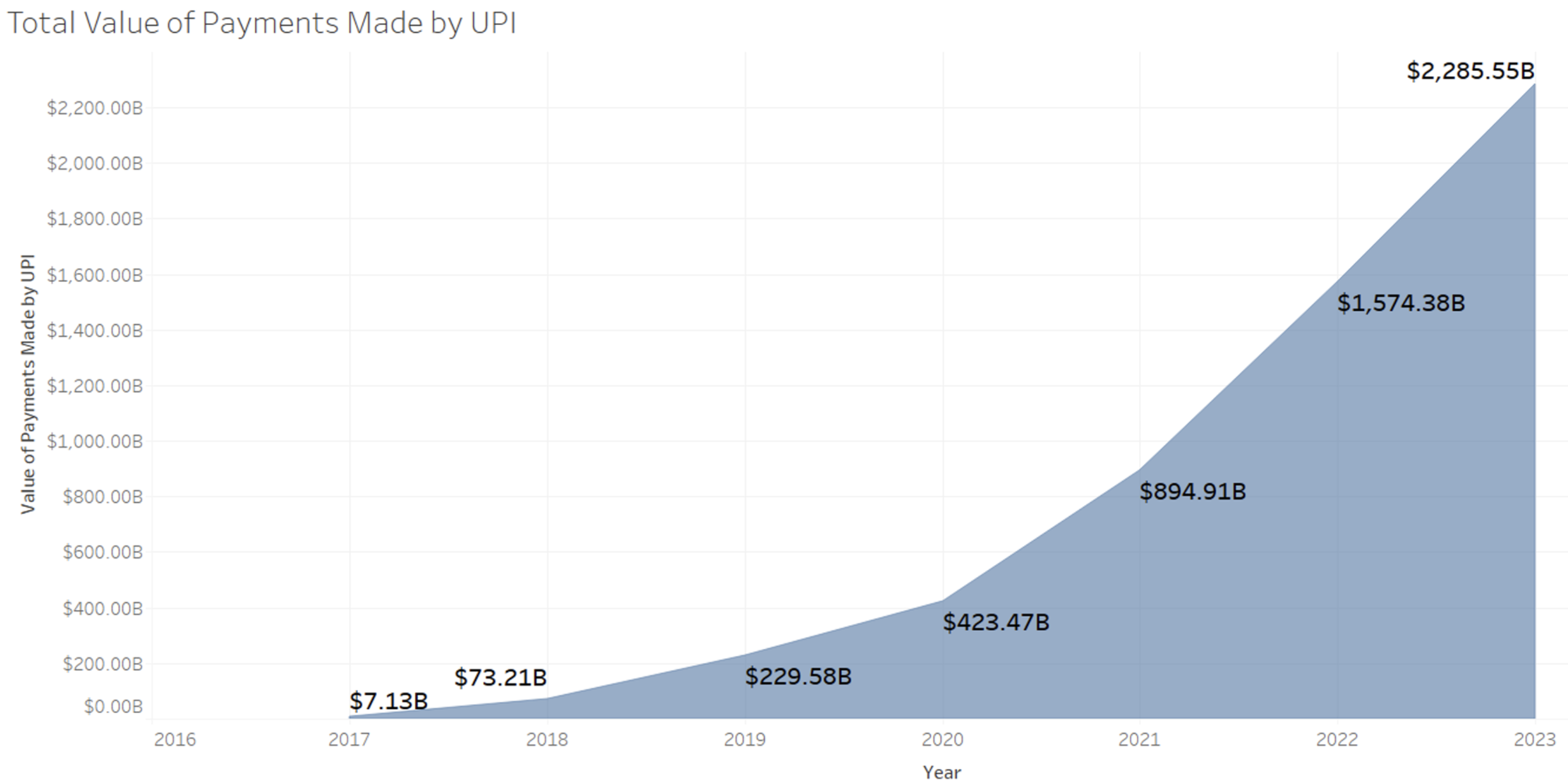
Source: National Payments Council of India releasing charts Investors get interested in 👀
To put this into context: The current yearly amount is already about 1/4 of Visa’a $10T global payments volume and the graph does not show a slow-down of exponential growth yet. Let me know if I got the numbers wrong or I am dividing oranges by apples. But to me at least, this is impessive.
But this is just the tip of the iceberg!
- They have eKYC
- A standard to verify identities for more than 1.39B people (!).
- Digilocker
- a system of personal cloud “lockers” that allow to link, fetch, and store digitally signed copies of important documents like Income Tax cards, driver’s licenses, insurance policies, and educational diplomas on your phone. Easily sharable.
- Account Aggregator
- India’s version of Open Banking. It helps to digitally move data between service providers, including consented data sharing to third-party providers.
- ONDC (Open Network for Digital Commerce)
- Which is essentially a protocol standard to build a decentralized digital marketplace.
- Think building Uber, but clients and driver apps and dispatchers can be built by multiple vendors.
- Essentially the vision of blockchain protocols, but without any blockchain involved, created by a government.
And this brings me to my main point here: All of these are not just standards, they are platforms. Think of them as decentralized protocols. Here for example ONDC:
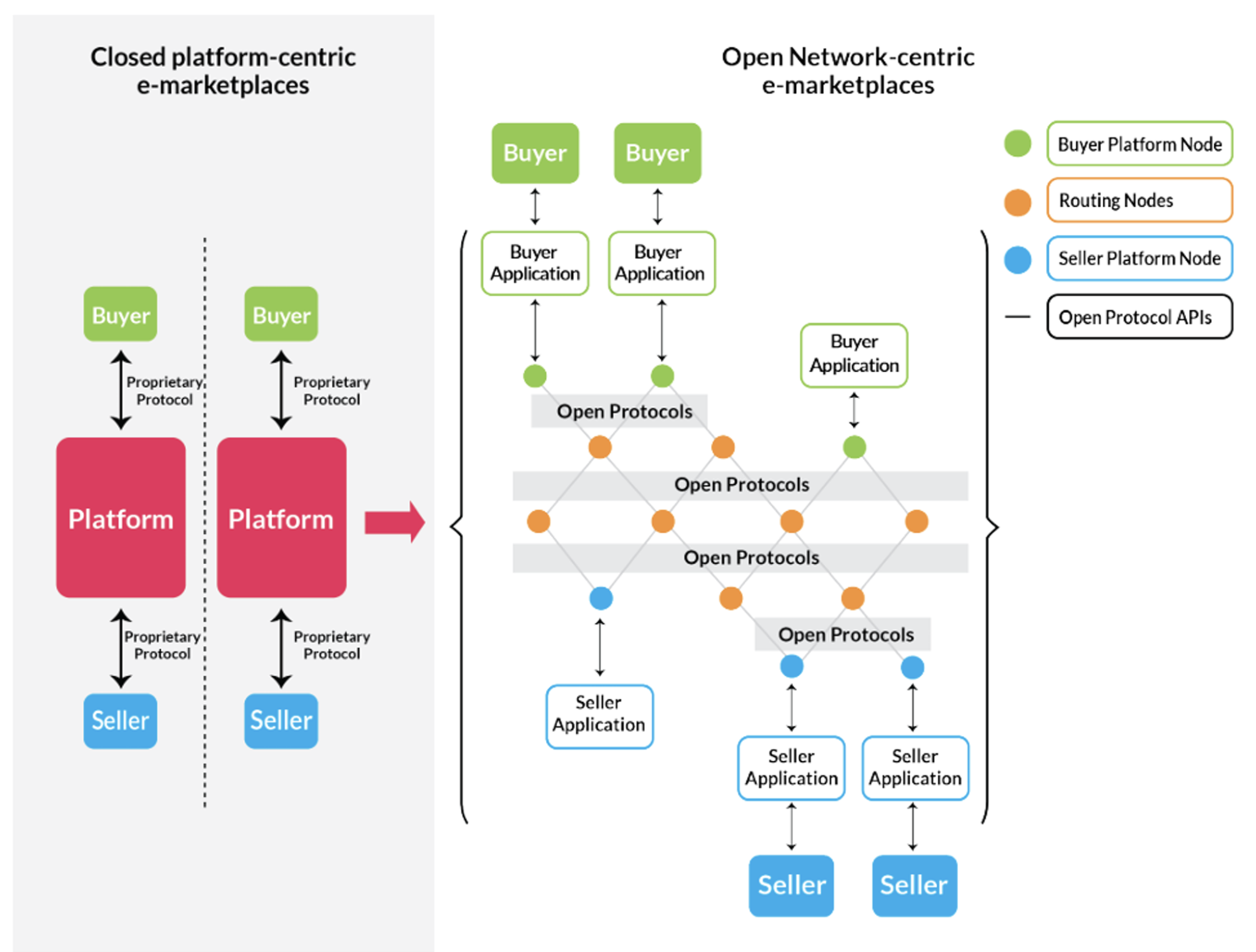
Anyone can build clients or servers for them or use the standards for other use-cases. For example, the main apps for UPI are from companies like Google or Walmart (PhonePe).
You, today, could build software using UPI, ONDC or Lockers – or even build fullstack replacement-solution incorporating both.
Btw to show where this is going: The next step here is OCEN - an ONDC-like standard for lending. Essentially it allows street vendors to share their cashflow info (via lockers, account aggregators, and UPI) with a (ONDC-like) decentralized marketplace of lenders on which creditors bundle risk classes and provide competitive rates nationwide. This gives people in rural regions access to market-rate credits.
And they built this with 1.4B people in mind. To put this into scale: A global audience would only be a 3-5x for them.
I think internationally a lot of people are sleeping on this change.
Solving large-scale problems not only by standardizing but by productizing is mindblowing to me. In Europe, we are not even able to standardize.
Do you know how many fintech founders I know who would kill just for better EU-wide eKYC and banking standards? And I am not even sure if I am joking here.
This is miles ahead of where the EU or the US are. And this is not about benchmarking individual technologies like OpenBanking. The closest comparison I have is Estonia’s eGOV technology (they consulted each other btw) but their country's population (and hence majority of userbase) is a 1/1000th of India. If it’s up to me I would love to have Estonia build this for all of Europe asap.
We are missing the train.
Imagine fundraising or secondaries in the context of ONDC-like decentralized marketplace standards. This could be theoretically real in the next 5-20 years in India. Meanwhile, in Europe, I can barely invest without understanding 20-30 different legal systems of all member countries.
This isn’t just “eGovernance” – this is a modern approach to public infrastructure – digital public infrastructure. It’s about rethinking how to solve challenges as a whole. It’s about thinking about solutions to problems as opportunities to build digital platforms - platforms others can use to build on-top of.
Take a problem, standardize, and productize. Make it easy to build for it and ultimately reframe the problem as a market opportunity.
“India is built around the mobile phone like the US was built around the car.” – Read more about this concepts on the amazing blog Tigerfeathers
Did I manage to UPI/DPI-pill you here? DM me and let me know :)
Critical parts
Based on this article, I think it's obvious that I see India as one of the top 3 nations of the world in the next decades.
But I also want to share a few critical thoughts to make sure I don't come across as just pandering to an audience.
Nationalism
Since the independence enormous efforts were put into building a nation-state. This is one of India’s greatest opportunities. Being unified and being prideful about it.
Keep in mind that there was no one unified India before the colonization and that even the inner-state boundaries are, in many cases, a new invention after the independence.
But as Austrian, I am personally worried about a few trends I see. Populism is a dangerous tool. You get a lot of short-term energy among your voters by creating groups, "we vs them". But you are also raising a cultural debt that you will have to pay down with interest. Either with costly long-term political efforts or even more costly bloody conflicts.
Several actions are hard for me to judge as a foreigner but nonetheless concerning. The removal of Muslim temples that are several hundred years old and replacing them with Hindu temples. The intolerance towards minorities, non-Hindu culture, language, and religion. To just name a few.
Almost everyone I met was positive about the current government's economic activities, they are doing something right here. But even among those supporters several were concerned about those aspects.
To me, as a foreigner, India’s strength seems to be its ability to bring multiple cultures under one umbrella. It is a country full of different people and religions, and exactly this is its strength. They leap-frogged many other Western concepts. There is no reason to build mono-cultural nation-states in the outdated Western model anymore.
Acceptance of poverty
India isn't India.
India is multiple countries in one.
- About 120 million people are living at the quality of life of Mexico
- About 300 million live like in Indonesia
- And about 1 billion live in the equivalent of Sub-sahara Africa.
They call this India1, India2 and India3. And all three can all be neighbors in the same city.
To put this into context: Out of 1.4 billion people, about 0.3% of India’s population provides 80% of their total income tax and only 8% of households own a car. Read more about this in Blume VC’s excellent report.
But the thing that was fascinating for me was the natural acceptance by many that opportunity might not be possible for everyone - at least for quite some time.
I am not sure if this is realistic pragmatism, a left-over of the cast system, or just me being too western-minded to not acknowledge potential local truths that change will need decades of work.
Women
I was traveling for three weeks in India. My wife wanted to join.
We had long discussions about it. My interest in Yoga comes from her and she can list multiple Gurus and other Indian concepts. We have several Ganeshas at home eg.
But I knew that I would be busy and I didn't want her to be alone most of the time. For one part because that's not how I want to travel together. But also because India is notoriously dangerous for women.
If I can give the Indian government one recommendation it's this… And I don't know how this is even a sentence I have to write.… Do anything you can to make sure your country isn't associated with gang rape.
This is not an abstract concern. This is not a rare situation. I personally know several people who had to run away from large groups of men on their trips in India.
This isn’t an abstract fear or statistics. This is reality. This isn't about "cultural differences". This is about enforcement of the law, fixing the brand of India, and ensuring safety for locals, tourists, and business travelers from potential gang rape.
Directly and more bluntly put, and feel free to cancel me for this statement but: You don’t want to be perceived as a third-world country anymore? Get rid of those savages, now.
With my wife, I agreed on a separate trip with her, joined by other people to stay safe.
As a quick positive side note: I made an effort to try to meet female founders and VCs in every city.
India is not a liberal paradise for women and the most successful Indian women I know all had to leave the country to unfold their potential. But surprisingly the VC events I went to had a better women's attendance than eg Berlin VC events. Unfortunately, many of them are not yet at their fund’s GP level, also like in Berlin, but it’s a start.
Personal thoughts
Thanks to everyone
I had a ridiculous warm welcome. MULTIPLE people organized large meetups for me. And many people came although I barely promoted those meetups, as I am notoriously shy about self-promotion.
Dozens of important people took last-minute meetings with me (usually with no more than 3 days, sometimes just 3 hours’ notice). And I have yet to meet an Indian who didn't give me his Whatsapp and tell me "call me if you need anything at any time".
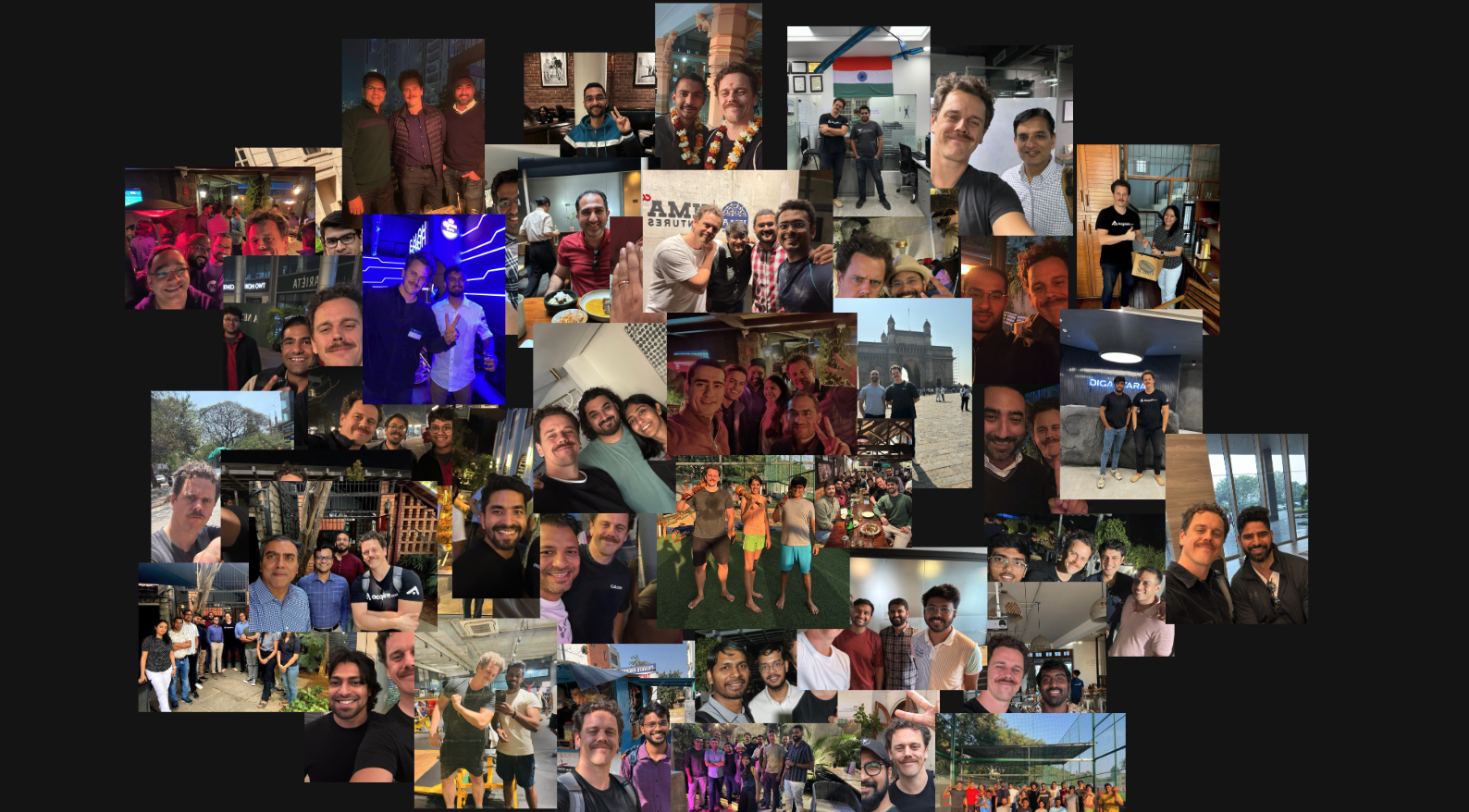
Selfies at meetings in India – it's a thing 😬
I always assumed that friendliness was unique to some of my Indian friends, now I know that this is the indian-baseline.
The food wasn't that spicy
Ok this one is my biggest hot-take… 🥁 (sorry)
Indian food isn’t that spicy. Yea most has heat but it's never "F-U" spicy even if you ask for it - trust me I tried. I had the spiciest curries and biryanis. Nothing was “too spicy” to eat.
I think there is a big misunderstanding. Indian food has heat and many spices. But it's never too hot-spicy to eat – because no cook would ever kill flavor just to make it more spicy. Disclaimer: I might be biased here as I do my own hot sauces with Ghost Peppers.
Sidenote: My favorite food spots were: Swati in Mumbai/Ahmedabad, Halidram in Delhi, Rameshwaram, Konark Kanteerava, and Sri Krishna Sagar in Bangalore – overall winner a friend’s mother cooking at home for us.
Happy to hear your Indian food recommendations for Berlin, London, Vienna, and Lisbon.
It's gorgeous
Yes, it's a developing country. Yes, there is a lot of poverty and yes the buildings and streets are messy and loud.
But damn it's beautiful.

India was an absurdly rich, technologically advanced superpower before it got robbed by the East India Company and you can still see this in many parts of the country. Large beautiful structures most non-Indians have never heard about. Natural diversity from desert to jungle, from urban dystopia to gorgeous beaches. India is big and encompasses a lot of diversity. Different religions and cultures under one umbrella.
PS: If you still learned that the mighty British Empire conquered backwater India with technological superiority (as I did) I highly recommend learning about the actual history. TL;DR: It was a private company, Indian money, and Indian mercenaries. Empire and ExtraCredits have both a great series on it.
I loved learning about Hindu concepts from first hand
Many Indian concepts have become popular in Western culture. From Yoga to Meditation. But you will also read about concepts like Atma and Dharma in Western self-help books. I never really understood them in this abstract setup.
Reading a bit of the Vedas, the Gita, and parts of the Mahabharata, as well as visiting local temples of Sikh, Hindu, Muslim, Buddhist, and Jain helped me fundamentally put them into context.
I highly respect multiple concepts in the Hindu religion. Just to name a few that stuck with me:
- It’s OK to be non-comprehensible
- You have stories that conflict with each other and concepts that are meant to be not comprehensible. Good examples are deities being abstract and absurdly human simultaneously (eg the trinity divine).
- It’s all-encompassing
- Hinduism is vast. Thousands of local deities and they are all accepted
- As a layman, it feels like you could move any religion into Hinduism and it would still make sense
- It recognizes that people are different
- People have different paths to their goals in life and even how they worship or fulfill their Dharma (~truth/duty/path of your life/role)
- And that's OK
Aside from how Hinduism might be used in [ancient or modern] politics. This natural acceptance of difference spoke to me.
Summary
It feels like the world needs a software update. China is no longer cheap outsourcing. Japan is no longer the tech superpower and India is no longer the India of the 80s or 90s and not even of the early 2000s. And this is not going back.
India will be one of the big superpowers in the next decades – especially if this generation has anything to say about it.
I am extremely grateful to anyone who helped me in India to have such an amazing trip and I look forward to many more visits.
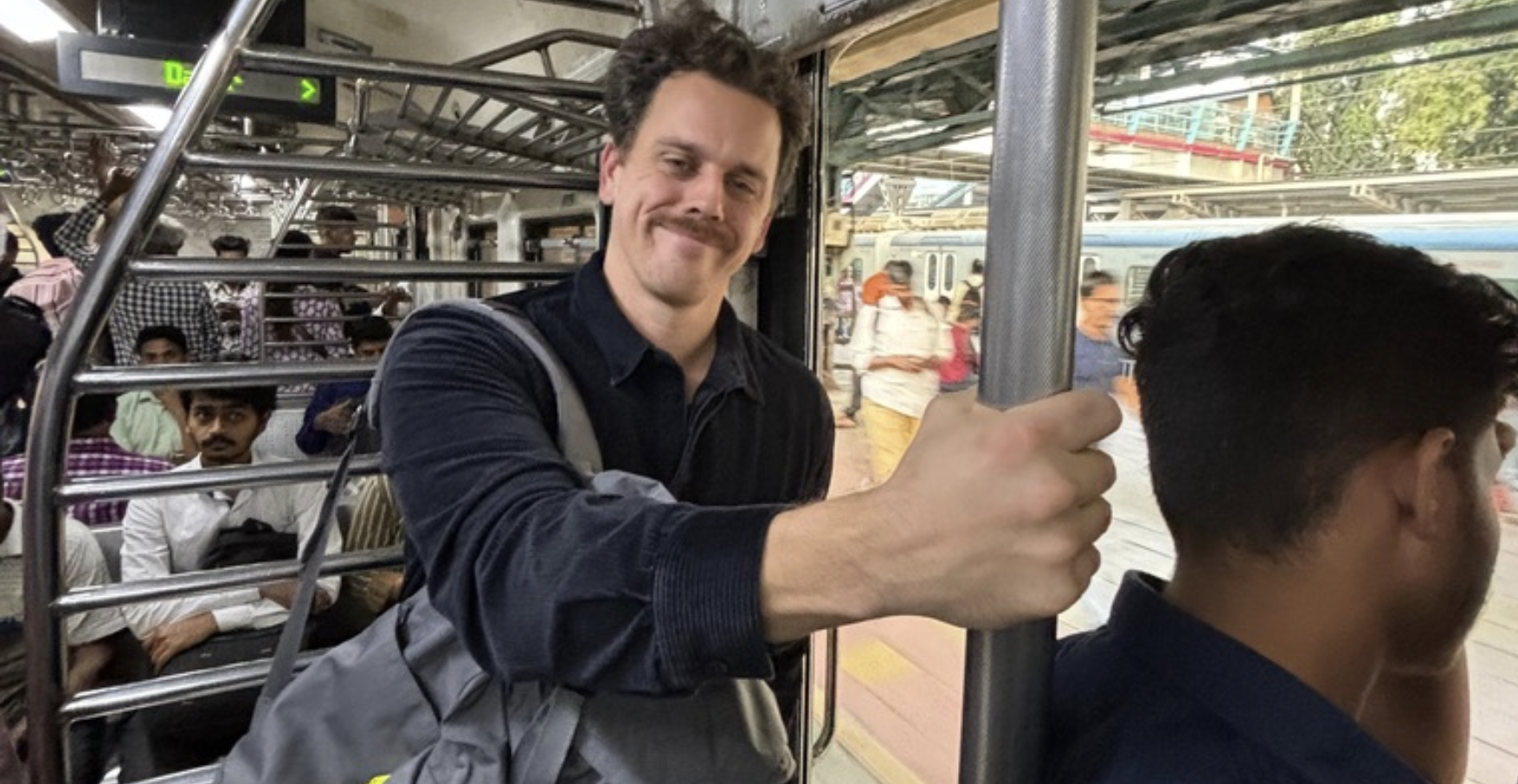
Thanks for reading
– Andreas
PS: No matter if people agree with my POV or not. I am bullish on the local startup ecosystem. I have invested in multiple Indian startups and plan to continue doing so. (1,2,3,4 just to name a few). Hit me up if I can help with your round.
Also, if you are interested in investing in Indian deep-tech pre-seed funds please DM me I have multiple amazing funds I would like to refer to you.
PPS: Shoutout to Ritvik, Rahul, Shiva, Aggy, Susi and Art for reading the early drafts of this article.